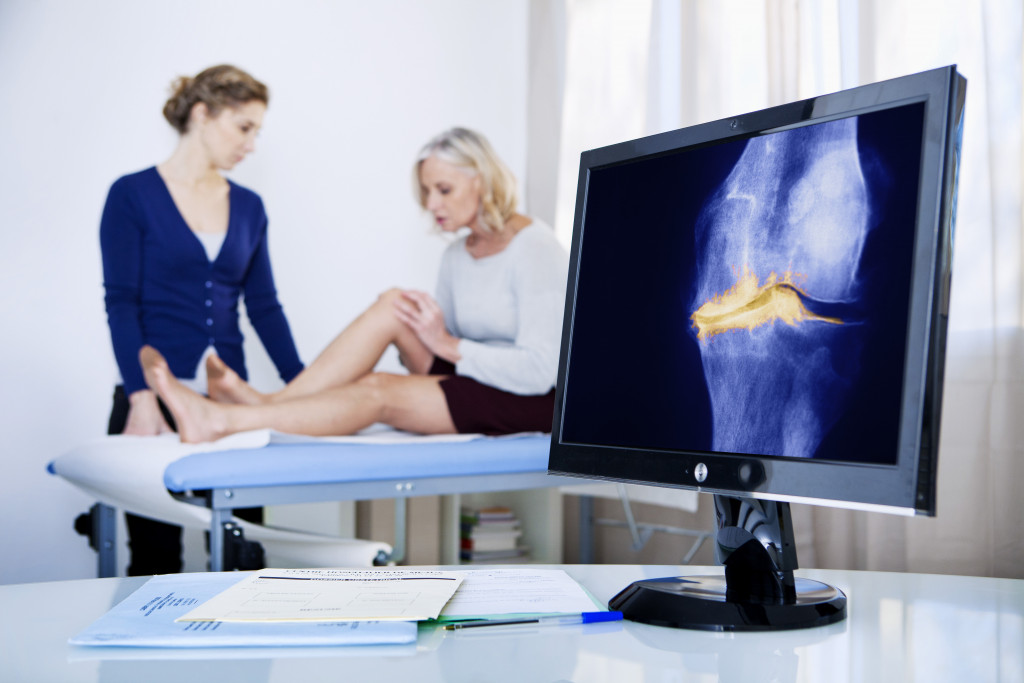Arthritis is a general term for conditions that affect the joints. There are more than 100 types of arthritis, and osteoarthritis is the most common type. Osteoarthritis can affect any joint in the body, but it most commonly affects the knees, hips, and hands.
This blog post will focus on discussing osteoarthritis: what it is, the symptoms, and the various treatment options. So, let’s get started!
What is Osteoarthritis?
Osteoarthritis is a degenerative joint disease that occurs when the cartilage that cushions the ends of the bones breaks down. This can happen for several reasons, including age, obesity, repetitive use, or previous injury. When the cartilage breaks down, the bones rub together, causing pain, stiffness, and swelling.
What are the Symptoms of Osteoarthritis?
The symptoms of osteoarthritis vary from person to person. They may come and go, and they may be worse at certain times, such as after exercise or when it’s cold outside. The most common symptoms are:
Joint Pain
The pain associated with osteoarthritis is often a dull, achy feeling. It may be worse after you’ve been active or when you wake up in the morning. You may also feel pain when you move the affected joint.
Joint Stiffness
Joint stiffness is common, especially in the morning or after a period of rest. The stiffness may go away after you move around for a while. You may also feel stiffness after you’ve been active.
Joint Swelling
While swelling is not as common, you may notice that the affected joint is larger than normal. This can happen when fluid builds up in the joint. The swelling may make the joint feel warm to the touch.
What Causes Osteoarthritis?
Several factors can contribute to the development of osteoarthritis. Age is the most common factor. As we age, our joints begin to wear down from years of use. This wear and tear can lead to the development of osteoarthritis. Other risk factors for osteoarthritis include:
Joint Injury or Trauma
Sometimes, a single event, such as a fall, can cause enough damage to the joint to lead to osteoarthritis. For example, ACL tears are a common knee injury that can lead to osteoarthritis later in life.
Obesity
If you are carrying around extra weight, it puts added stress on your joints. This can lead to the development of osteoarthritis, especially in the knees and hips. You are also more likely to develop osteoarthritis at a younger age if you are obese.

Repetitive Motion
Jobs or hobbies that involve repetitive motion can put you at risk of developing osteoarthritis. For example, people who play tennis or who work on an assembly line may be more likely to develop the condition.
Diseases That Affect the Joints
Certain diseases, such as rheumatoid arthritis, can lead to the development of osteoarthritis. Here are some other diseases that are linked to osteoarthritis:
- Gout
- Psoriatic arthritis
- Osteoporosis
What are the Treatment Options for Osteoarthritis?
There is no cure for osteoarthritis, but there are treatments that can help relieve the pain and improve joint function. The most common treatments are:
Exercise Regularly
Exercise is one of the best things you can do for osteoarthritis. It helps to strengthen the muscles around the joints, which can help to take some of the pressure off of the joints. It also helps to improve range of motion and flexibility. Here are some exercises that can be helpful for people with osteoarthritis:
- Walking
- Swimming
- Cycling
- Weight Training
Use Heat or Cold Therapy
Applying heat or cold to the joints can help to relieve pain and stiffness. Heat therapy, such as using a heating pad or taking a warm bath, can help to relax the muscles and improve blood flow. Cold therapy, such as ice packs or cold compresses, can help to reduce inflammation and numb the area.
Go for Surgery
In some cases, surgery may be recommended to treat osteoarthritis. The most common type of surgery is knee replacement surgery, where the damaged joint is replaced with an artificial one. There are alternatives for knee replacement surgery, such as using knee braces or shoe inserts, so be sure to discuss all of your options with your doctor before making a decision.
Use Medications
There are many different types of medications that can be used to treat osteoarthritis. The most common are:
- Non-steroidal anti-inflammatory drugs (NSAIDs), such as ibuprofen or naproxen, can help to reduce inflammation and pain.
- Corticosteroids, such as prednisone, can be taken orally or injected into the joints to reduce inflammation.
- Disease-modifying anti-rheumatic drugs (DMARDs), such as methotrexate, can help to slow the progression of osteoarthritis.
There you go! That’s everything you need to know about osteoarthritis. Be sure to talk to your doctor if you think you may be at risk of developing the condition. And, as always, exercise regularly and eat a healthy diet to keep your joints healthy!





